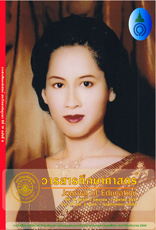รูปแบบการเรียนภาษาจีนของนิสิต คณะมนุษยศาสตร์และสังคมศาสตร์ มหาวิทยาลัยบูรพา (The Learning Styles of Chinese Language Students from the Faculty of Humanities and Social Sciences at Burapha University)
คำสำคัญ:
Learning style, Chinese languageบทคัดย่อ
บทคัดย่อ
การวิจัยครั้งนี้มีวัตถุประสงค์เพื่อศึกษาและเปรียบเทียบรูปแบบการเรียนภาษาจีนของนิสิต คณะมนุษยศาสตร์และสังคมศาสตร์ มหาวิทยาลัยบูรพา จำแนกตามเพศ ชั้นปี และกลุ่มวิชา กลุ่มตัวอย่างที่ใช้ในการวิจัย คือ นิสิตคณะมนุษยศาสตร์และสังคมศาสตร์ มหาวิทยาลัยบูรพา ชั้นปีที่ 1-4 ที่เรียนวิชาภาษาจีน ในปีการศึกษา 2550 จำนวน 132 คน เครื่องมือที่ใช้ในการวิจัย เป็นแบบสอบถามมาตราส่วนประมาณค่า (Rating scale) 5 ระดับ ซึ่งพัฒนามาจากแบบสอบถามรูปแบบการเรียนรู้ของกราชาและไรช์แมน (Grasha and Riechmann) มีค่าความเชื่อมั่น .89 สถิติที่ใช้วิเคราะห์ข้อมูล ได้แก่ ค่าร้อยละ (Percentage) ค่าเฉลี่ย ( X ) ค่าความเบี่ยงเบนมาตรฐาน (SD) ค่าที (t-test) และค่าความแปรปรวนทางเดียว (One - Way ANOVA) ผลการวิจัยพบว่า
1.นิสิตคณะมนุษยศาสตร์และสังคมศาสตร์ มหาวิทยาลัยบูรพา ที่เรียนภาษาจีนมีรูปแบบการเรียน
ภาษาจีนแบบมีส่วนร่วมเป็นอันดับแรก รองลงมาเป็นแบบอิสระ แบบร่วมมือ แบบพึ่งพา แบบแข่งขันและ
แบบหลีกเลี่ยง ตามลำดับ
2.นิสิตคณะมนุษยศาสตร์และสังคมศาสตร์ มหาวิทยาลัยบูรพา ที่เรียนภาษาจีนที่มีเพศต่างกัน
มีรูปแบบการเรียนภาษาจีนไม่แตกต่างกัน นิสิตที่มีชั้นปีต่างกันมีรูปแบบการเรียนภาษาจีนแบบ หลีกเลี่ยง
Abstract
The purpose of this research was to study and compare the learning styles of Burapha University,Faculty of Humanities and Social Sciences students studying the Chinese language (Mandarin), classified by gender, class level, and subject group. The sample group consisted of 132 students who were studying Chinese language during the 2007 academic year. The research instrument used in collecting the data was a five-point scale, developed from Grasha and Riechmann's questionnaire, and which had a reliability coefficient of .89. The data were analyzed using the descriptive statistics of percentages, means, standard deviation, and the inferential statistics of t-test and a one-way ANOVA. The main findings was that the majority of respondents chose Participant Chinese language learning style, followed by Independent, Collaborative, Dependent, Competitive and Avoidant Styles respectively. In addition, there was no gender difference in Chinese language learning styles. The Avoidant and Dependent Chinese language learning styles of students grouped by class levels were significantly different. Finally, the Avoidant and Participant Chinese language learning styles of students grouped by subject groups were significantly different.
Downloads
เผยแพร่แล้ว
ฉบับ
บท
License
บทความทุกบทความเป็นลิขสิทธิ์ของวารสารศึกษาศาสตร์ มหาวิทยาลัยบูรพา


